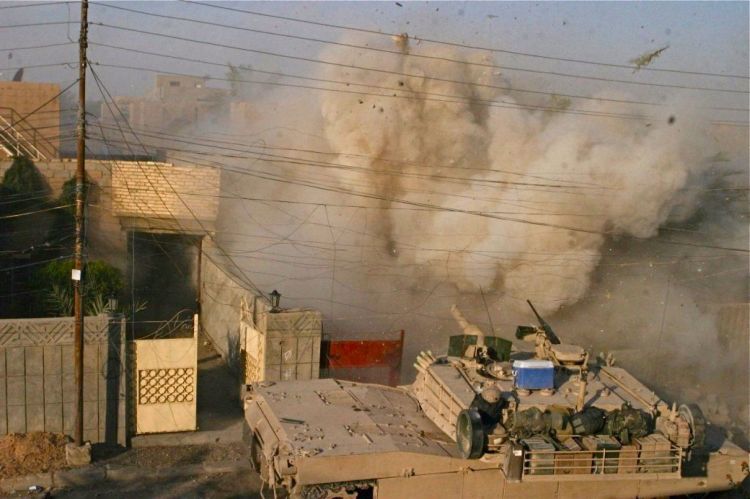Long before Lt. Gen H.R. McMaster took the job as President Trump’s national security adviser, he led 140 men into one the last major tank battles of the 20th century.
Known as the Battle of 73 Easting, reflecting the north-to-south-running map line that it occurred on in Iraq, the Persian Gulf War clash on Feb. 26, 1991, lasted less than half an hour and resulted in the loss of more than 25 Iraqi tanks, 16 personnel carriers and 30 trucks. Studied countless times and often used as an example of modern tank tactics, the battle made McMaster one of the rising stars of the post-Vietnam War Army and cemented his reputation as a combat leader.
McMaster’s Eagle Troop, an armored company of nine M1 Abrams tanks, 12 M3 Bradley Fighting Vehicles and a handful of supporting vehicles, was one of hundreds of units supporting the U.S. advance from Saudi Arabia into Iraq’s western desert. The goal was to strike the exposed western flank of the Iraqi army after it had dug in expecting a more southerly attack along the Saudi-Kuwait border.
After crossing into Iraq on Feb. 23, McMaster’s unit, along with other troops of the Second Squadron, Second Armored Cavalry Regiment, engaged three Iraqi armored personnel carriers that were approaching their position, according to an after-action account written by McMaster. By 3 p.m., when McMaster’s tanks began pushing toward the 70 Easting, blowing sand limited visibility and, in turn, air support.
After cresting a near-invisible rise in the desert, his men encountered the main Iraqi tank contingent. McMaster wrote:
“As we came over the top, Staff Sergeant Koch yelled “tanks direct front.” … In an instant, I counted eight tanks in dug-in fighting positions. Large mounds of loose dirt were pushed up in front of the vehicles and they were easily discernible to the naked eye. They had cleverly established their position on the back slope of the ridge (reverse slope defense) so they could surprise us as we came over the rise. We, however, had surprised them. We had destroyed their scouts earlier in the day and, because of the sandstorm, they had neither seen nor heard us.”
McMaster’s tanks and fighting vehicles, using a mixture of 120 mm guns, 25 mm cannons and TOW antitank guided missiles, accelerated through the Iraqi lines, firing as they progressed and leaving the Iraqi forces devastated. At 4:40 p.m. just shy of 74 Easting, the troop halted, and the following morning McMaster was ordered to move his vehicles to the south.
Writing of the battle and its lessons 25 years later for the website the Strategy Bridge, McMaster highlighted 10 key lessons from the engagement. One point was titled: “Take Risk to Win.”
“We had surprised and shocked the enemy; stopping would have allowed them to recover,” McMaster wrote. “As Erwin Rommel observed in Infantry Attacks: “The man who lies low and awaits developments usually comes off second best. … It is fundamentally wrong to halt – or to wait for more forces to come up and take part in the action.”
Send questions/comments to the editors.



Success. Please wait for the page to reload. If the page does not reload within 5 seconds, please refresh the page.
Enter your email and password to access comments.
Hi, to comment on stories you must . This profile is in addition to your subscription and website login.
Already have a commenting profile? .
Invalid username/password.
Please check your email to confirm and complete your registration.
Only subscribers are eligible to post comments. Please subscribe or login first for digital access. Here’s why.
Use the form below to reset your password. When you've submitted your account email, we will send an email with a reset code.